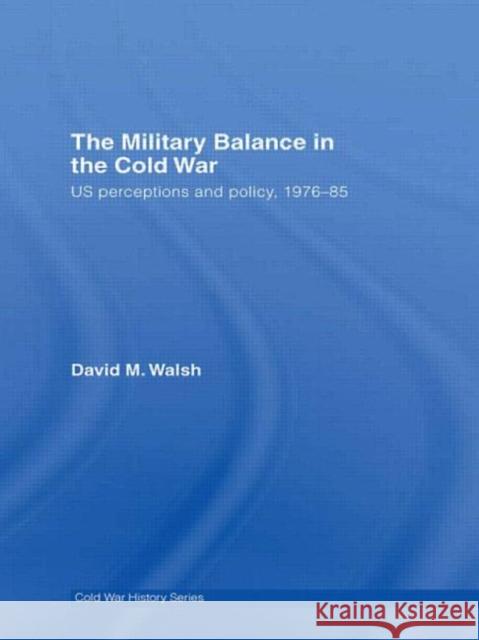The Military Balance in the Cold War : US Perceptions and Policy, 1976-85 » książka
The Military Balance in the Cold War : US Perceptions and Policy, 1976-85
ISBN-13: 9780415426190 / Angielski / Twarda / 2007 / 304 str.
The Military Balance in the Cold War : US Perceptions and Policy, 1976-85
ISBN-13: 9780415426190 / Angielski / Twarda / 2007 / 304 str.
(netto: 720,05 VAT: 5%)
Najniższa cena z 30 dni: 748,32
ok. 22 dni roboczych
Dostawa w 2026 r.
Darmowa dostawa!
This book examines the impact of American perceptions of the military balance between the United States and the Soviet Union during the key period of 1976-1985.
That decade witnessed the decline of the US-Soviet dtente and the resurgence of superpower confrontation, often called the Second Cold War. Among the factors contributing to this shift was the American view of the military balance whether the United States had been or was being overtaken by the Soviet Union in terms of military capability. Since then, the military balance has been viewed within the overall context of issues impacting superpower relations during this era. David Walsh examines the full range of issues - strategic and European-based forces, power-projection capabilities, and military spending - and their role in shaping perceptions, not just of the military balance but also in such key areas of international relations as arms control, trans-Atlantic diplomacy and Third World conflict. In doing so, he shows how the perceptions of the 1970s contributed to key policy decisions in the 1980s, which themselves played a significant role in bringing the Cold War to an end.
The Military Balance in the Cold War will be of interest to advanced students of Cold War history, strategic studies, US foreign policy and international relations in general.











